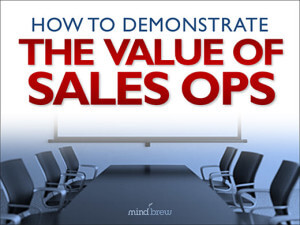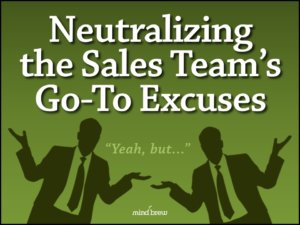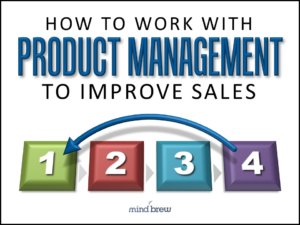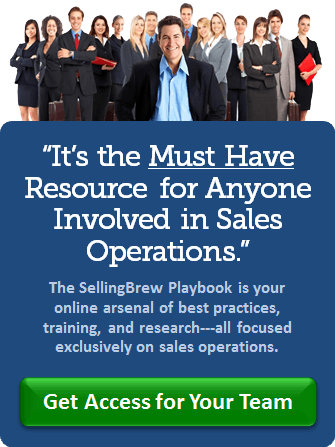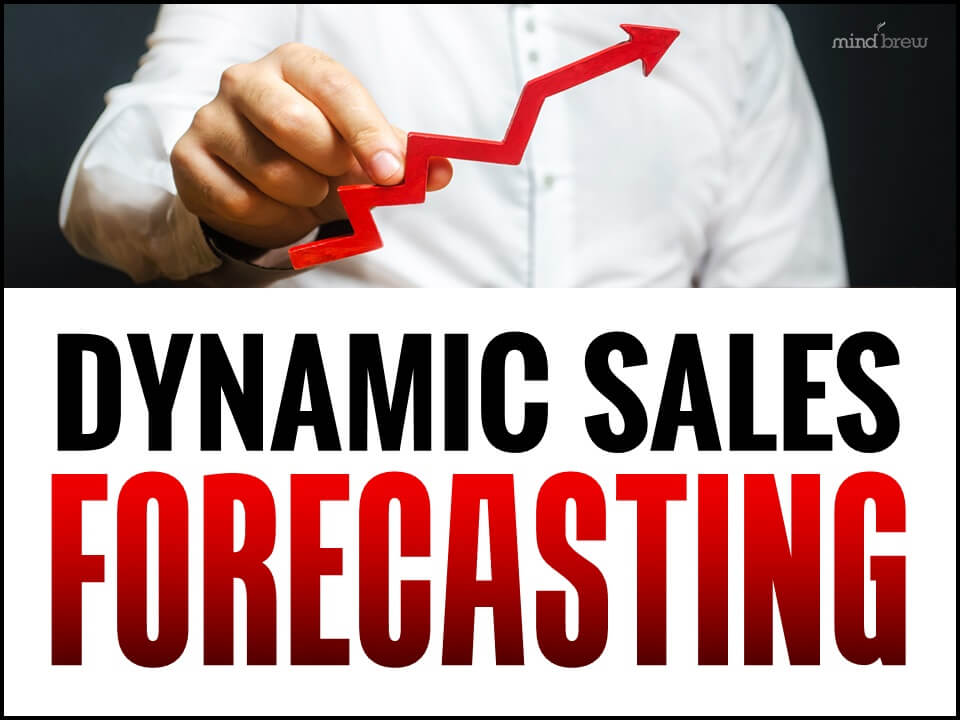Through the SellingBrew Playbook’s Help Desk, we get quite a few questions about Sales Ops metrics. Now, I think it’s fantastic that people are interested in the best ways to measure the value and contribution of their Sales Ops functions. And of course, we’re in a great position to help by sharing what we’ve learned…good, bad, and ugly…about the measures and metrics that other teams are using.
I do, however, feel compelled to offer a word of caution…
Metrics and measures can be very alluring. It’s easy to think that if we just find the right set of productivity and contribution measures, we can extinguish all doubts and pushback, get all the support and resources we need, and shut all those internal naysayers up, once and for all.
But as we discuss in Demonstrating the Value of Sales Operations, quantitative metrics and measures are simply not enough…and you should not rely solely on the numbers to demonstrate your team’s value and contribution.
Why? Because all of the influencers and decision-makers in your company are human…presumably…and humans are not rational beings.
As humans, we have a tendency to base a large portion of any decision or judgment on emotion or instinct. We then look to support, confirm, or even rationalize those assessments with logic or data.
We have to understand that the judgments of those around us are based on a combination of both qualitative and quantitative information. And beyond that, it’s in our best interests to also acknowledge that qualitative judgments can sometimes overpower all of the quantitative evidence to contrary.
Here’s how it can happen…
Let’s say I’ve interacted with Bob a few times and my “gut” tells me that he’s a disingenuous poser. I “feel” that he might be incompetent and “sense” that he was only hired because he knows someone on the board. Further, I “suspect” that his plans and initiatives are wrongheaded and he’s leading his department down some very wasteful and distracting paths.
How do you think I’m going to react when Bob presents his department’s stellar performance metrics and measures?
Am I going to take the quantitative data at face value and change my qualitative assessments accordingly? Or, am I more likely to be very skeptical and question the veracity of the numbers themselves?
And when I uncover a miscalculation or inaccurate assumption (which I’m bound to do), am I going to overlook it and focus on the larger story the data is telling? Or, am I more likely to see it as proof-positive of my suspicions and discount the entire story, chapter and verse?
If you’ve held a job for more than six months, I think you know the answer.
On their own, neither the qualitative nor the quantitative are sufficient. But the combination of the two is really hard to beat. So…you need to be proactive about managing both.

